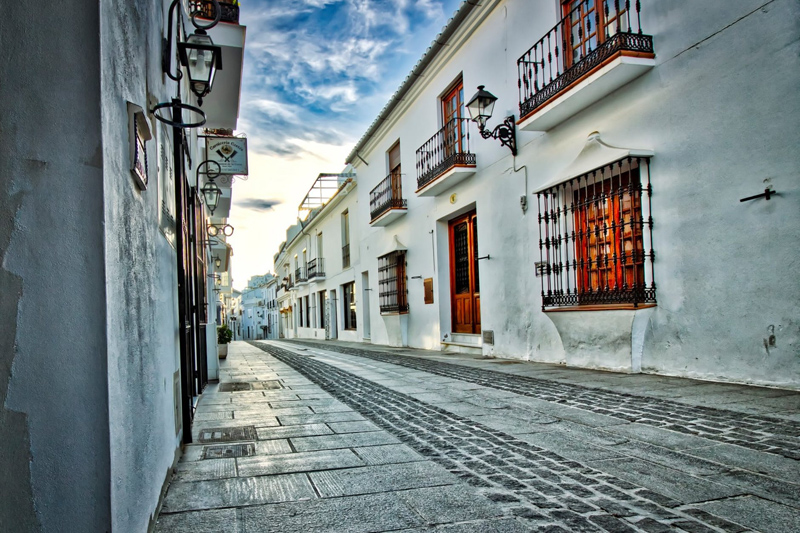Spanish tip of the month. ¿Qué hora es?

I read, few days ago, some notes by the Real Academia de la Lengua Española about the use in Spanish of “la hora” and how to express it. What is right, and what is wrong. I thought this could be interesting, so here you can find the most important points about the use of “la hora”:
The Spanish translation of “What time is it?” is “¿Qué hora es?". As you can see, the verb (“es”) is singular. According to the RAE, the plural form “¿Qué horas son?” is accepted, but not recommended. There is one use of the plural form, considered correct: when used in a reproving way. Imagine your son should have arrived at noon, but he didn't. He arrives much later; that's the situation when you could tell him: “¿Qué horas son estás?”
When you are asked ¿Qué hora es? (Question always with the verb in singular (es)), the answer will be “Es la...” (verb in singular) only if it is “la una” (“Es la una y cinco”, “Es la una menos cuarto”), and in plural for the rest of hours: “Son las dos”; “Son las siete menos diez”, etc.
When telling the time, we can either use:
a) numbers from 1 to 12, or use
b) numbers from 0 to 23. (Written with numbers, not with letters.)
For the first option, using numbers from 1 to 12, we can specify the moment of the day and we usually write it with letters. For example: “Son las tres de la mañana.” or “Son las tres de la tarde.”
But this doesn't mean we are obliged to write always letters! We can also write the hour with numbers, but in order to avoid misunderstandings, we'll use either “a.m.” or “p.m.” The first one, “a.m.” means “ante meridiem” in Latin, and means “before noon”. The second one, “p.m.” means “after noon” (from Latin “post meridiem”).
Examples:
“Las 3 p.m.”, that is, “Las tres de la tarde”.
“Las 8 a.m.”, that is, “Las ocho de la mañana.”.
(Both forms are correct.)
One more thing: The abbreviations “m” is recommended for “noon”. That is, whenever we need to refer to “noon”, (“mediodía”) we'll express it this way: “12 m.”.
The use of letters (“las doce” instead of “12 m”, for example) is very common in literary texts and writen publications. Texts where the use of the time is relevant, will express it with numbers: “La tienda cerrará a las 6:00” or “La tienda cerrará a las 6pm”.
Remember you can not use letters and numbers in the same text when expressing times. For example, it is better to write: “las siete de la mañana.” than “las 7 de la mañana.”.
The use of letters implies aproximate time. On the other hand, when using numbers, the time is exact. And talking about aproximations, there are some forms we can use to express that idea: “alrededor de”, “hacia” (around) or “pasadas” (past). Some examples:
El tren llegó alrededor de las siete.
El tren llegó hacia las siete.
El tren llegó a las siete pasadas. (This means the train arrived some (few) minutes after seven o'clock.)
The abreviation “h”. “h”, for “hours” is used after times expressed in numbers, and without the final dot. So, the correct form is: “A las 10:00 h” and the wrong one would be “A las 10:00 h.”. The only exception will be when the final “dot”, the period, is needed, as the sentence is finishing at that point.
Remember we cannot use the abreviation “h” with either “a.m.” or “p.m.”. We cannot say: “Las 10 h p.m.”. We'll either use “Las 10 h” or “Las 10 p.m.”.
Other abreviations:
m = minutos
s = segundos
Interested in Spanish vocabulary and how it is used? If so, check out the Merriam-Webster's Spanish-English Dictionary
The Spanish translation of “What time is it?” is “¿Qué hora es?". As you can see, the verb (“es”) is singular. According to the RAE, the plural form “¿Qué horas son?” is accepted, but not recommended. There is one use of the plural form, considered correct: when used in a reproving way. Imagine your son should have arrived at noon, but he didn't. He arrives much later; that's the situation when you could tell him: “¿Qué horas son estás?”
When you are asked ¿Qué hora es? (Question always with the verb in singular (es)), the answer will be “Es la...” (verb in singular) only if it is “la una” (“Es la una y cinco”, “Es la una menos cuarto”), and in plural for the rest of hours: “Son las dos”; “Son las siete menos diez”, etc.
When telling the time, we can either use:
a) numbers from 1 to 12, or use
b) numbers from 0 to 23. (Written with numbers, not with letters.)
For the first option, using numbers from 1 to 12, we can specify the moment of the day and we usually write it with letters. For example: “Son las tres de la mañana.” or “Son las tres de la tarde.”
But this doesn't mean we are obliged to write always letters! We can also write the hour with numbers, but in order to avoid misunderstandings, we'll use either “a.m.” or “p.m.” The first one, “a.m.” means “ante meridiem” in Latin, and means “before noon”. The second one, “p.m.” means “after noon” (from Latin “post meridiem”).
Examples:
“Las 3 p.m.”, that is, “Las tres de la tarde”.
“Las 8 a.m.”, that is, “Las ocho de la mañana.”.
(Both forms are correct.)
One more thing: The abbreviations “m” is recommended for “noon”. That is, whenever we need to refer to “noon”, (“mediodía”) we'll express it this way: “12 m.”.
The use of letters (“las doce” instead of “12 m”, for example) is very common in literary texts and writen publications. Texts where the use of the time is relevant, will express it with numbers: “La tienda cerrará a las 6:00” or “La tienda cerrará a las 6pm”.
Remember you can not use letters and numbers in the same text when expressing times. For example, it is better to write: “las siete de la mañana.” than “las 7 de la mañana.”.
The use of letters implies aproximate time. On the other hand, when using numbers, the time is exact. And talking about aproximations, there are some forms we can use to express that idea: “alrededor de”, “hacia” (around) or “pasadas” (past). Some examples:
El tren llegó alrededor de las siete.
El tren llegó hacia las siete.
El tren llegó a las siete pasadas. (This means the train arrived some (few) minutes after seven o'clock.)
The abreviation “h”. “h”, for “hours” is used after times expressed in numbers, and without the final dot. So, the correct form is: “A las 10:00 h” and the wrong one would be “A las 10:00 h.”. The only exception will be when the final “dot”, the period, is needed, as the sentence is finishing at that point.
Remember we cannot use the abreviation “h” with either “a.m.” or “p.m.”. We cannot say: “Las 10 h p.m.”. We'll either use “Las 10 h” or “Las 10 p.m.”.
Other abreviations:
m = minutos
s = segundos
Interested in Spanish vocabulary and how it is used? If so, check out the Merriam-Webster's Spanish-English Dictionary
You Should Also Read:
Spanish tip – Prepositions
Spanish tip of the month – Polisemia - Polysemy
Spanish tip of the month. También and tampoco

Related Articles
Editor's Picks Articles
Top Ten Articles
Previous Features
Site Map
Content copyright © 2023 by Angeles Fernández. All rights reserved.
This content was written by Angeles Fernández. If you wish to use this content in any manner, you need written permission. Contact Angeles Fernandez for details.






